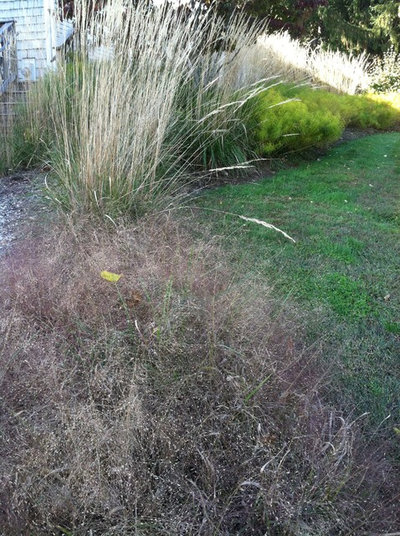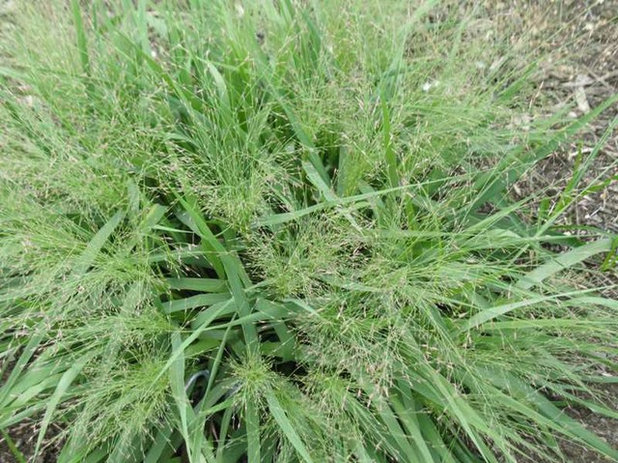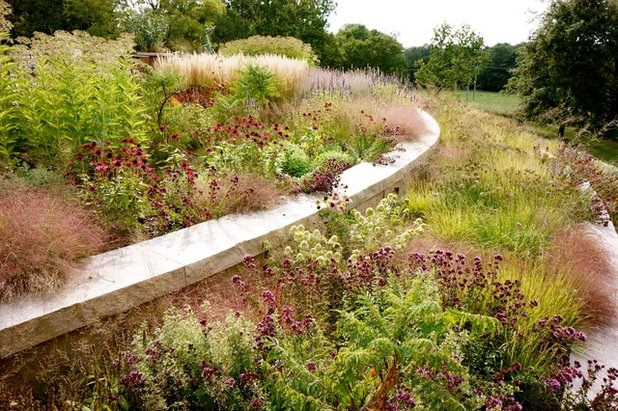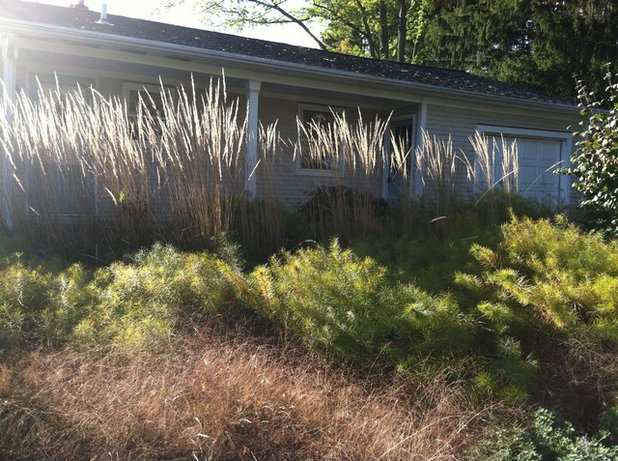If your yard has an unattractive rocky, gravelly or sandy area in full sun, purple lovegrass (
Eragrostis spectabilis) may be a good solution. This native loves some pretty difficult growing conditions and will reward you with a late-summer to early-autumn floral show that — when you plant this grass en masse — will take your breath away at a time of year when flowers can be harder to come by. Try it as a ground cover or in rock gardens and in drifts of dozens for the best design and bang for your buck.

Gardens of Delight
Botanical name: Eragrostis spectabilisCommon names: Purple lovegrass, purple plains lovegrass
Origin: Native from Maine south to Florida and west to North Dakota and Arizona
Where it will grow: Hardy to -40 degrees Fahrenheit (USDA zones 3 to 9; find your zone)
Water requirement: Dry to medium soil
Light requirement: Full sun
Mature size: About 2 feet wide and 1 foot tall; blooms may reach 2 feet tall
Benefits and tolerances: Does great in dry, well-drained soils, preferring sandy to rocky conditions
Seasonal interest: Bright green foliage gives way to masses of airy purple blooms in late summer, which turn brown in fall
When to plant: Potted or bare-root plants can be put in from late spring to early fall; sow seed after the danger of frost has passed in spring.

Missouri Botanical Garden
Distinguishing traits. This is one of the toughest grasses you can use as a ground cover. The big show comes in late summer to early fall, when the pink blooms put on an airy show that’s especially stunning from a distance. Enjoy the grass at sunset, when the low light washes over the flowers.

Adam Woodruff + Associates, Garden Artisans
How to use it. This is absolutely a grass you should plant in masses and drifts to highlight the flower show. Place a dozen or dozens together to bring their powers of beauty together for greater effect. Don’t place it among taller plants, as they may outcompete it. Do think about using it in a rock garden, where it will thrive.
Plants shown: (click photo to see the plants tagged): Purple lovegrass, Bartered Bride Joe Pye Weed (
Eupatorium maculatum ‘Bartered Bride‘), Ruby Giant coneflower (
Echinacea purpurea ‘Ruby Giant’), feather reed grass (
Calamagrostis x acutiflora ‘Karl Foerster’), cutleaf staghorn sumac (
Rhus typhina ‘Laciniata’), lesser calamint (
Calamintha nepeta ssp
nepeta), Black Adder hyssop (
Agastache ‘Black Adder’), Coconut Lime coneflower (
Echinacea purpurea ‘Coconut Lime’), purple moor grass (
Molinia litoralis ‘Transparent’), autumn moor grass (
Sesleria autumnalis), ornamental oregano (
Origanum laevigatum ‘Herrenhausen’) and ornamental allium (
Allium ‘Summer Beauty’)

Gardens of Delight
Planting notes. Dry to medium soil in full sun is best. Don’t put this grass in a bed with rich or even good soil. It just won’t be happy unless you throw the worst at it.
Purple lovegrass spreads in open ground by seed and, depending on competition and soil moisture levels, by rhizomes. The seed heads detach in late fall to spread in the wind like tumbleweeds.
Plants shown (from front to back): Purple lovegrass, bluestar (
Amsonia sp) and reed grass (
Calamagrostis sp)
More: Browse more grass guides on Houzz
Browse plants native to other regions of the U.S.





